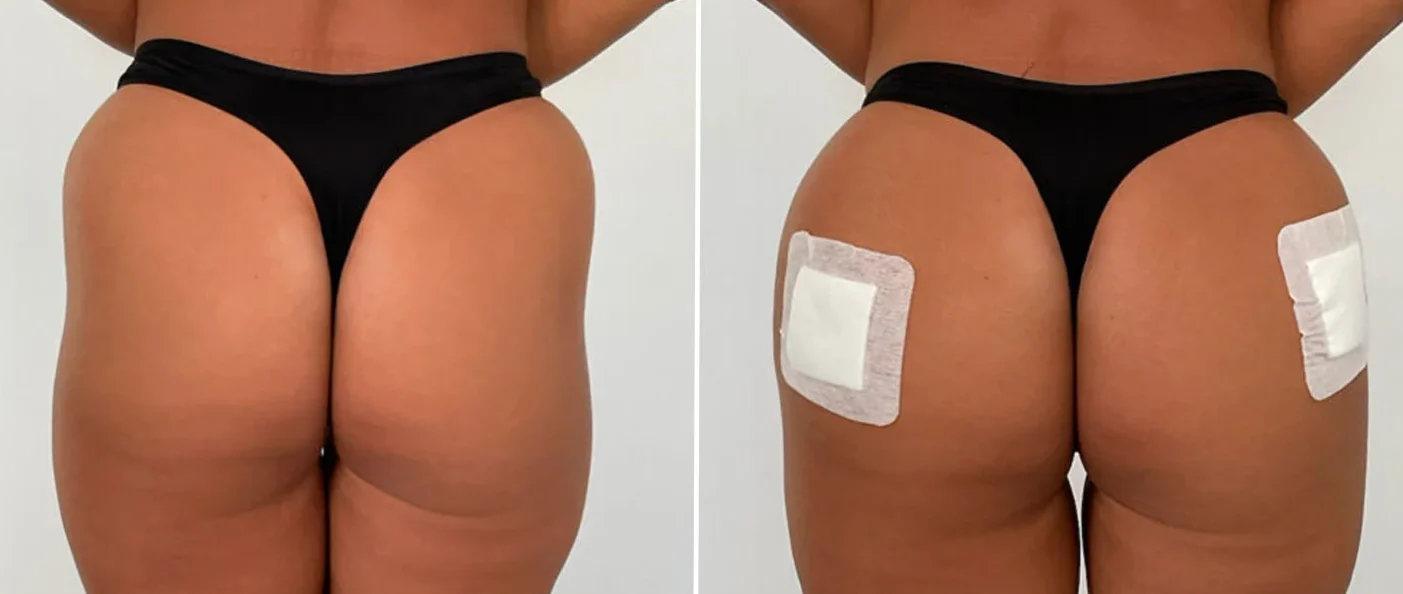
Many patients ask whether combining treatments will save recovery time or compromise safety. The answer is layered and varies depending on which procedures are involved. Butt fillers, commonly composed of hyaluronic acid or collagen stimulators, are often selected for their nonsurgical nature and relatively quick recovery period. But when patients want to address multiple aesthetic concerns at once, timing and compatibility become crucial. It’s not uncommon for someone to consider combining butt fillers with procedures like liposuction, skin tightening, or even facial injectables in the same session. But not all combinations are advised. While dermal fillers are minimally invasive, they still involve tissue response, swelling, and localized healing. Adding another procedure may overload the body or skew the healing process. Doctors generally recommend planning around how the body will metabolize each product and react to simultaneous interventions.
Some clinics allow butt fillers and abdominal contouring in the same session with caution
Some clinics allow butt fillers and abdominal contouring in the same session with caution. The combination is often requested by individuals looking to reshape both front and back simultaneously. Liposuction in the abdomen or flanks can be paired with gluteal augmentation to create an hourglass shape. However, careful balance is needed. While liposuction removes fat, fillers add volume. Performing both may distort proportions unless properly calculated. Swelling can mask results temporarily, making post-procedure assessment difficult. Also, each area demands different aftercare. Lipo requires compression garments and drainage, while fillers require soft tissue protection without excessive pressure. These competing needs must be coordinated ahead of time. Surgeons and aesthetic physicians will often assess the patient’s skin elasticity, BMI, and healing history before greenlighting this combo. Though popular, it’s not suitable for every body type or medical background.
It’s possible to combine butt fillers with skin tightening if energy-based devices are timed correctly
It’s possible to combine butt fillers with skin tightening if energy-based devices are timed correctly. Radiofrequency, ultrasound, or laser skin tightening may be used to firm the lower body. These technologies trigger collagen production but also generate heat beneath the skin. If used too soon after filler injections, they can disrupt product integrity or cause migration. Therefore, most providers recommend spacing the procedures by at least several days or even weeks. Some may prefer doing the tightening first to stimulate skin readiness before volume is added. Others inject fillers first, allowing swelling to reduce before targeting laxity. The sequence depends on the devices used, the filler type, and the treated area’s stability. Planning must include cooling measures, hydration maintenance, and monitoring for heat sensitivity. Combining these treatments can improve contour, but misalignment in scheduling risks undermining results from both interventions.
Many patients schedule facial injectables during the same appointment as lower body contouring
Many patients schedule facial injectables during the same appointment as lower body contouring. The convenience of addressing multiple regions in one visit is appealing, especially for patients with limited downtime. Fillers and neuromodulators like Botox can be injected into the face while butt fillers are placed, offering a full-body refresh. Since these treatments target different anatomical zones, interference is minimal. However, the total amount of injected product should be carefully monitored. Overloading the lymphatic system with too many compounds can cause excessive swelling or delayed healing. Physicians must calculate how much volume the body can tolerate at once. Blood circulation, hydration, and metabolism influence this decision. It’s also essential to manage time between injections, allowing each area to settle before moving to the next. Patients benefit from fewer clinic visits but should expect slightly more post-procedural fatigue.
Staging the procedures may offer more predictable outcomes than combining everything together
Staging the procedures may offer more predictable outcomes than combining everything together. While it might seem efficient to complete multiple treatments in one day, the body doesn’t always cooperate with stacked interventions. Especially in the case of gluteal fillers, post-procedure inflammation can interfere with assessment of symmetry and volume distribution. Adding another procedure at the same time makes it harder to distinguish the source of discomfort or complication. Some providers suggest dividing sessions—focusing on the glutes first, then returning for other concerns later. This allows better monitoring and adaptation if the body reacts differently than expected. It also gives the patient time to mentally adjust and evaluate satisfaction before committing to further changes. Although staged treatments may require more visits, they often produce cleaner results with fewer surprises.
Compression garments used after other procedures can distort newly injected filler placement
Compression garments used after other procedures can distort newly injected filler placement. When butt fillers are combined with surgeries like liposuction or abdominoplasty, post-op garments are typically required. These tight garments help reduce swelling, improve skin retraction, and minimize fluid accumulation. However, they exert pressure on the gluteal region—potentially flattening filler results or pushing product into unintended areas. Not all garments are designed to accommodate newly augmented buttocks. If the garment doesn’t contour correctly, it may lead to asymmetry or uneven absorption. Patients undergoing both treatments must wear custom-fitted or adjustable garments that minimize pressure on the buttocks. Some surgeons recommend suspending garment use for the gluteal area temporarily. Communication with the care team is critical to adjust instructions based on how the fillers respond. Without proper attention to this detail, well-placed injections may shift undesirably during recovery.
Patients considering surgery later should discuss how fillers may affect tissue dissection
Patients considering surgery later should discuss how fillers may affect tissue dissection. Fillers in the buttocks are injected into subcutaneous layers, often near fat or fascia. If the patient plans to have a surgical butt lift or gluteal implant later, prior filler presence can complicate the approach. Residual product may cause resistance during dissection or lead to unexpected tissue response. Depending on the filler type, the body may encapsulate or metabolize the material slowly. Some fillers are fully absorbed in months, while others leave traces for years. Surgeons need to know injection history, filler brand, volume, and depth. This allows them to plan incision placement and avoid inflamed or fibrotic zones. It also reduces the risk of hitting unfamiliar masses during surgery. For patients unsure whether to choose fillers or surgery long-term, it’s better to start with reversible fillers and avoid permanent ones.
Not all fillers behave the same when combined with other cosmetic interventions
Not all fillers behave the same when combined with other cosmetic interventions. Some are thick, cohesive gels, while others are soft and spreadable. Products like poly-L-lactic acid work by stimulating collagen rather than adding instant volume. These fillers require time to take effect and may respond differently to heat or manipulation. When paired with devices like lasers, ultrasound, or intense massage therapies, outcomes vary depending on formulation. Using the wrong combination can shorten filler lifespan or produce irregular contours. Before combining any procedure, the provider must know exactly what product is injected. Inconsistent documentation or off-brand fillers raise complication risks. Only medical-grade fillers approved for gluteal use should be considered. Patients should never agree to simultaneous treatments unless they’re fully informed of all product characteristics and interactions. Even reputable brands perform differently depending on hydration levels and body temperature.
Some clinics refuse to perform combinations unless medically justified and time-efficient
Some clinics refuse to perform combinations unless medically justified and time-efficient. Clinics prioritizing safety over convenience may suggest splitting treatments even if technically possible to combine. Long appointments increase risks related to fatigue, vasovagal reactions, or inconsistent technique due to time pressure. Fatigue on the provider’s side may affect filler placement accuracy, especially in sculpting delicate contours. If the patient begins to swell mid-procedure, assessing symmetry becomes harder. Overlapping side effects from two areas—like bruising in the face and inflammation in the buttocks—can complicate aftercare instructions. A responsible clinic will guide patients toward optimal planning, even if it reduces immediate revenue. Red flags include rushed consultations, overly ambitious schedules, and vague aftercare plans. Trustworthy providers prioritize outcome quality and procedural clarity over stacking as many procedures as possible into one session.
Your goals determine whether combining is efficient or compromises individual result quality
Your goals determine whether combining is efficient or compromises individual result quality. If your aim is small refinements across multiple zones, combined treatments may be appropriate. If your target is major change in one area, focus should remain there. When a provider understands which result matters most, they can build a strategy that prioritizes that outcome. Attempting to optimize every region at once often leads to diluted results. It’s better to have one perfect improvement than several minor ones that fade or conflict. Combined procedures must be built around this logic—not just availability or time convenience. The best plan isn’t always the fastest; it’s the one that protects your investment and supports long-term satisfaction.
